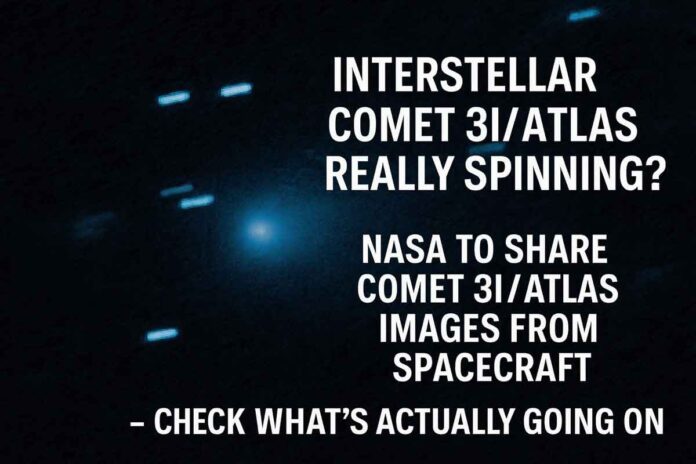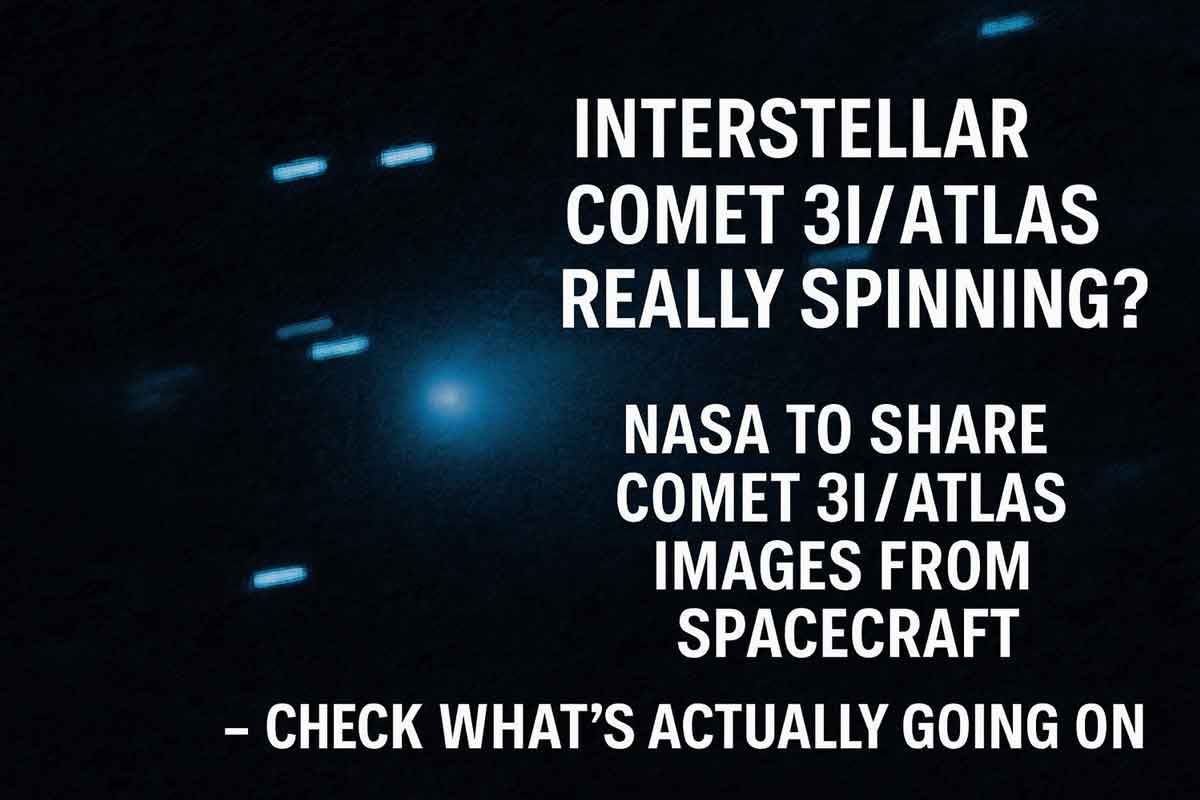3I/ATLAS is the third confirmed interstellar object to enter our solar system.
Detected by the ATLAS survey system, the comet immediately drew interest due to its high speed and hyperbolic trajectory—clear signs it originated from outside our solar system.
Since then, interstellar comet 3I/ATLAS NASA observations have become a major focus for astronomers and space agencies.
3I/ATLAS Is Spinning? New Footage and Claims
Over the past weeks, online videos have surfaced claiming that 3I/ATLAS is really spinning. The clips show the comet’s coma and tail appearing to rotate or twist, triggering intense speculation about unusual behavior. Astronomers urge caution. Many “spinning” effects come from stacked long-exposure images, dust jets, and image-processing artifacts. NASA’s calibrated spacecraft data will determine whether 3I/ATLAS is rotating normally like other comets, or if the motion is more complex. For now, the viral spinning claims remain unverified.
3I/ATLAS Interstellar Comet Discovery
Discovered in July 2025 by the ATLAS (Asteroid Terrestrial-impact Last Alert System) telescope, the comet was rapidly confirmed as interstellar. Its name reflects both its survey origin and its historic status as the third interstellar object after ʻOumuamua and Borisov. The appearance of a third interstellar visitor in such a short time suggests these objects may be more common in the galaxy than once believed.
3I/ATLAS Origin and Interstellar Journey
Data shows 3I/ATLAS did not form in our solar system. It was likely ejected from a distant planetary system through gravitational interactions and has spent millions of years traveling through interstellar space. Its icy surface preserves material from another star system—making it a rare scientific opportunity.
3I/ATLAS Movement and Visibility
The comet follows a hyperbolic path, meaning it will pass through the solar system once and never return. Several NASA and ESA spacecraft near Mars have already captured detailed images. From Earth, the comet remains faint and is best viewed with binoculars or small telescopes under dark skies.
Scientific Importance of 3I/ATLAS
3I/ATLAS allows scientists to study material formed around another star. Research focuses on:
- Its gas and dust composition
- Rotation and structural behavior
- Tail development and dust jets
- How it reacts to solar radiation
Comparing 3I/ATLAS with solar-system comets may reveal how planetary systems form differently across the galaxy.
3I/ATLAS Observation Tips for Skywatchers
Sky-watchers hoping to observe the comet should:
- Use updated star charts or astronomy apps to locate the comet
- Observe from a dark-sky site with minimal light pollution
- Let eyes adjust to darkness for 20–30 minutes
- Use binoculars or a small telescope for best results
Can 3I/ATLAS Be Seen Without a Telescope?
No. Current brightness estimates suggest that 3I/ATLAS is too faint for the naked eye.
Even experienced observers need binoculars or telescopes to view it clearly.
Safety and Prevention Tips for Sky-Watchers
- Avoid pointing binoculars or telescopes near the Sun
- Use a stable mount to prevent eye strain
- Carry a red-light flashlight to preserve night vision
- Inform someone before observing from remote locations
Key Details
- Object: 3I/ATLAS (Interstellar comet)
- Category: Third confirmed interstellar visitor
- NASA Update: Spacecraft will share new images soon
- Main Question: “Is interstellar comet 3I/ATLAS really spinning?”
- Status: Spinning claims not yet verified
Disclaimer
This article summarizes publicly available information and ongoing scientific updates.
Observations, brightness estimates, and interpretations may change as NASA and international space agencies release new data. Readers should follow official scientific sources for the latest findings.
FAQs
Q1. Is interstellar comet 3I/ATLAS really spinning?
Viral videos suggest a spinning motion, but these effects may come from dust jets or image-processing artifacts. NASA’s upcoming spacecraft images will clarify the comet’s true rotation.
Q2. Why is 3I/ATLAS important?
It carries material from another star system, giving scientists a rare chance to study interstellar chemistry and compare it with comets from our solar system.
Q3. Can 3I/ATLAS be seen without a telescope?
No. The comet is too faint for the naked eye and requires binoculars or a telescope for proper viewing.



